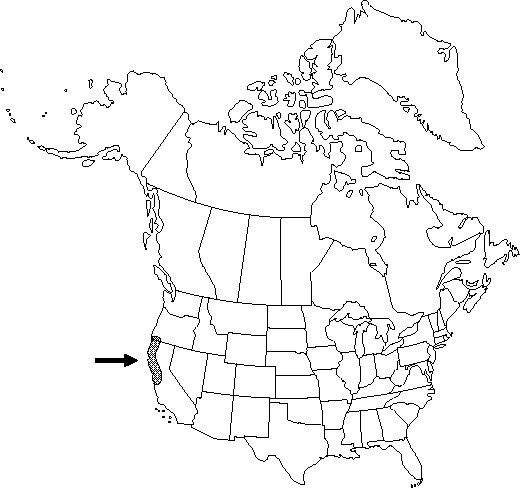Anemone grayi
Bull. Calif. Acad. Sci. 1: 5. 1884.
Aerial shoots (3-) 10-30 (-40) cm, from rhizomes, rhizomes horizontal, occasionally ascending. Basal leaves usually absent, occasionally 1, ternate; petiole (1.5-) 2.5-20 (-25) cm; terminal leaflet sessile or petiolulate, ovate to rhombic or oblanceolate, (1-) 1.5-4.5 (-5) × (0.6-) 1-2.5 (-3.5) cm, base cuneate, margins crenate, sometimes coarsely serrate, on distal 1/2-2/3, apex narrowly acute to acute, surfaces white-puberulous to pilose to nearly glabrous; lateral leaflets unlobed, rarely scarcely 1×-lobed; ultimate lobes 4-12 mm wide. Inflorescences 1-flowered; peduncle proximally glabrous, distally villous or pilose; involucral-bracts 3, 1-tiered, ternate, ±similar to basal leaves, bases distinct; terminal leaflet sessile to petiolulate, ovate to rhombic or oblanceolate, (1-) 1.5-4.5 (-5) × (0.6-) 1-2.5 (-3.5) cm, bases cuneate, margins crenate, sometimes coarsely serrate, on distal 1/2-2/3, apex narrowly acute to acute, surfaces white-puberulous to pilose to nearly glabrous; lateral leaflets unlobed, rarely scarcely 1×-lobed; ultimate lobes 4-12 mm wide. Flowers: sepals 5-6, white or blue, elliptic to obovate, rarely ovate, 7-15 × 4-8 mm, glabrous; stamens 25-40. Heads of achenes nearly spheric; pedicel (0.5-) 3-10 cm in fruit. Achenes: body elliptic, flat, 3-4 × 1.5-2 mm, not winged, puberulous to pilose; beak curved or recurved, 0.6-1 mm, glabrous. 2n=16.
Phenology: Flowering winter–early summer (Feb–Jun).
Habitat: Shaded woods, wooded slopes
Elevation: 100-900 m
Discussion
The rhizomes of Anemone grayi tend to be knobby rather than filiform as in A. lyallii and A. oregana. Investigation of the populations in which these three species overlap and appear to intergrade in southern Oregon and northern California is needed to clarify the taxonomic relationships among them.
Selected References
None.
Lower Taxa
"puberulous" is not a number. "pilose" is not a number.
